Art as expedition
Alphons ter Avest, trained at ArtEZ Arnhem, mainly realizes projects in public space. He also works in the 2-dimensional plane and has been involved in various artists' initiatives since his graduation in the early 1990s, motivated by the desire to realise, organise and show interesting platforms and challenges for the practice of art, such as the MIR project initiative which he launched in 2010.

Camp
The idea was to take art outside, not into a museum or a gallery. Not even in an empty building that can be used temporarily and under certain conditions for an artistic activity. But an own mobile and autonomous space that settles down at outdoor locations according to its own insight and necessity, as a quartermaster and as a research station for artists. Comparisons can be made with an expedition station, and the name MIR (Mobile Interdisciplinary Space) makes a nod to the first space laboratory; the Russian MIR that was discarded in 2001 and deliberately crashed into the earth. From that moment on we take over, as it were, on our earth's crust and in the, as yet, only habitable kilometre-thick zone of the universe.
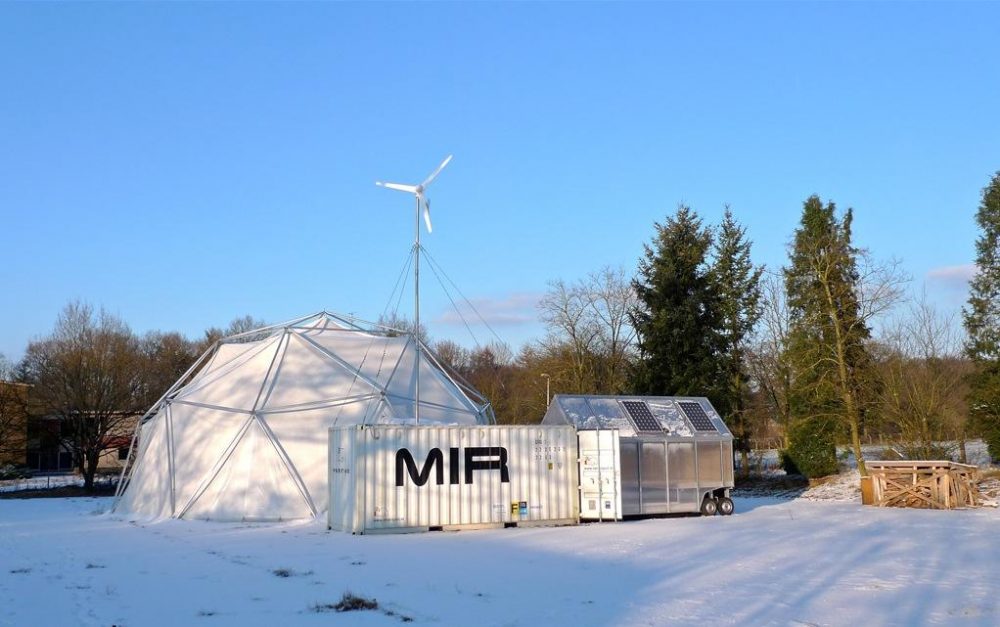
It gave rise to the design and creation of a space that can be used for location projects in the countryside. This space must not be too small, you want to be able to do everything in it, but the whole thing must fit into a sea container. It is a practical space; quick to transport, build up and get ready. Moreover, everything is foldable and mobile.
From that moment on, we take over, so to speak, on our earth's crust and in the, as yet, only habitable kilometer-thick zone of the universe.
Several companies have been approached to make parts in cooperation at the lowest possible cost. The logos of the companies, institutions and agencies involved are stuck on the container as sponsors. The expedition that follows does not only play in the high season but all year round, summer and winter. The MIR pavilion, which can be completely unfolded from a sea container and therefore can be moved anywhere via regular transport, has regularly been erected in the most diverse locations and often under difficult weather conditions, in mud, rain or snow.
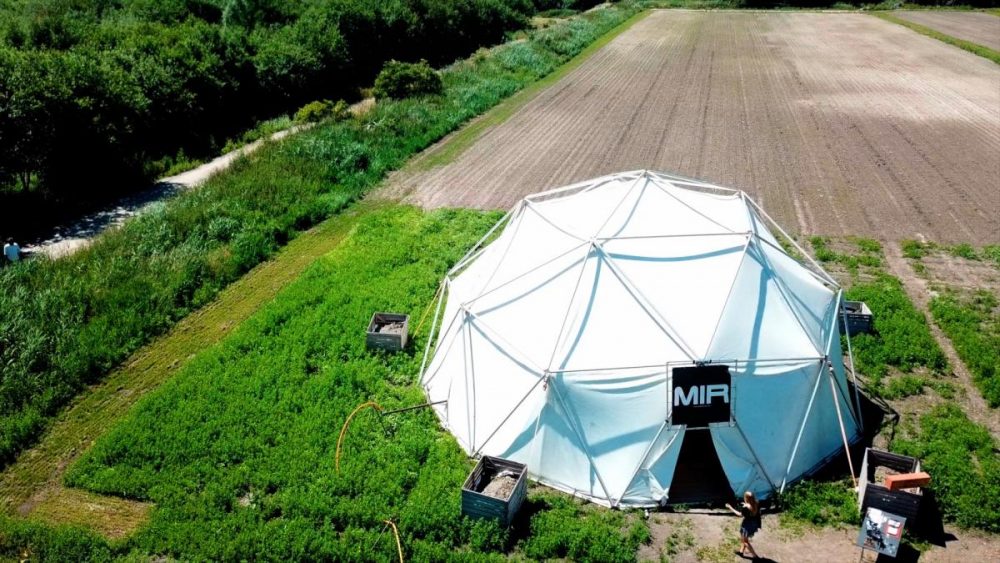
Expedition
The outwardly also strikes at the practical and technical impact of this ambition, because if you want to be able to work autonomously at locations where there is nothing, you have to have everything on board. The ability to generate energy, basic facilities, the ability to stay... in short, things that also come into play when you're in space. This causes the minimal conditions under which one can work. Some facilities are there, while others are missing. It prompts the artist to make special choices in his work.
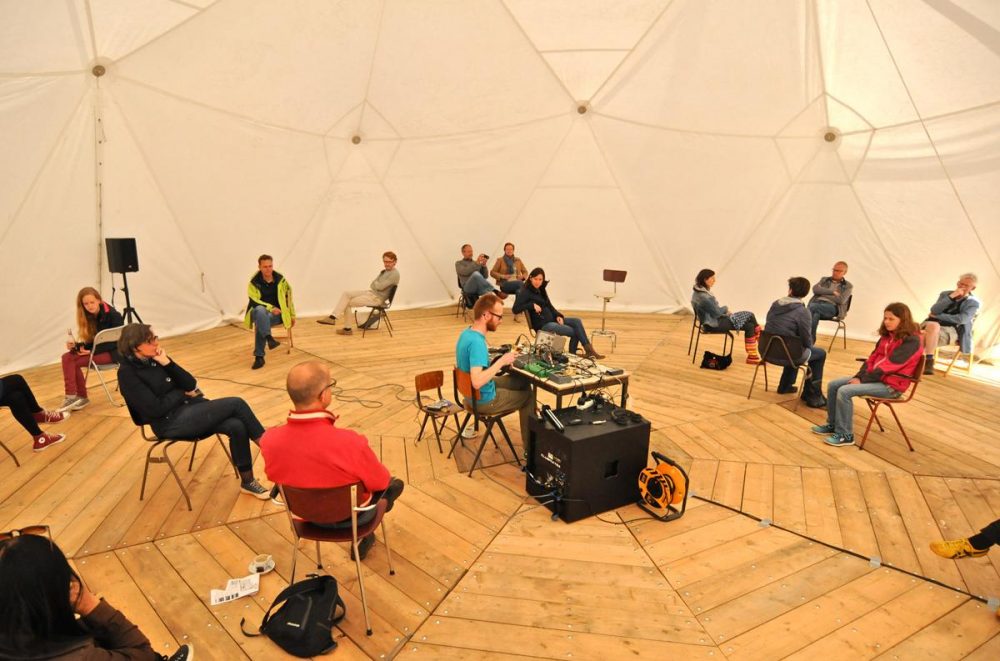
Choices that would probably not be made in a familiar space. This is where the MIR value lies.
You have to bring in all the necessities yourself and then, paradoxically, scarcity often seems to have a liberating effect.
After all, conditions at outdoor venues are often far from ideal; you miss the security of the institute, the permanent audience and the scene. You have to supply everything yourself and, paradoxically enough, scarcity often seems to have a liberating effect. In addition, the rather compelling space of the tent, 14 metres in diameter and 7 metres high, forces a statement from the artist, an unambiguous plan and gesture, everything else loses its force here. The dome has a centre, a focal point and that is where the focus lies. The latter is a striking difference with the usual rectangular exhibition space where a nice mix of thoughts can always be composed and styled.
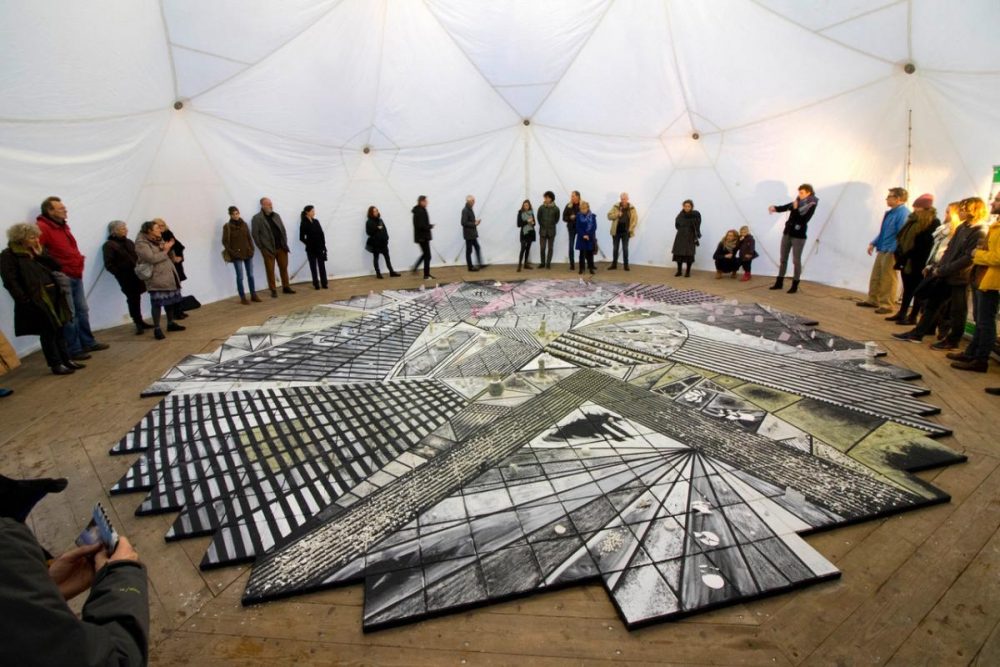
Partners
At the locations the projects are created with local parties. In the beginning these were mainly places around Arnhem where for decades there has been a close cooperation between the artists' initiatives. This has led to a special working environment, especially for beginning artists. MIR was co-founded after an invitation from the artists' initiative GANG for the project Brachen Siedlung in the German Ruhr area and later in the project Code Red that took place for a number of years on an abandoned barracks site in the woods of Arnhem Noord.
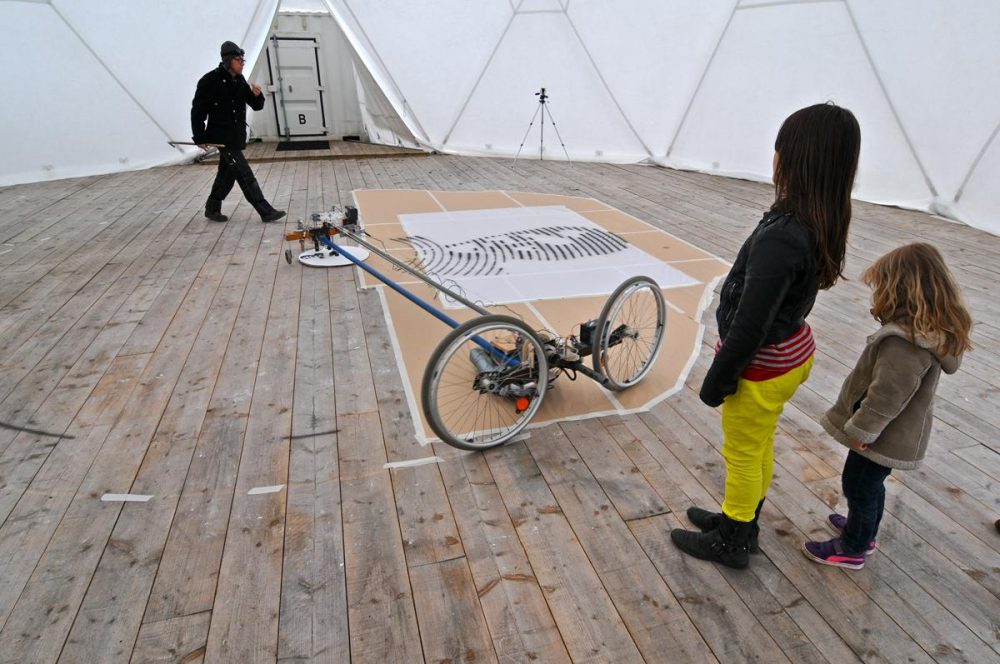
MIR also started with the supportive role of the Mondriaan Fund, which did see opportunities in the possibility of an expedition station for the arts at outdoor locations. In the early years there was little to spend and artists were paid for their exhibitions, which were often not visible to the public for more than a weekend.
What initially consisted of small-scale interventions and short-lived exhibitions gradually developed into project-based and larger projects.
What initially consisted of small-scale interventions and short-lived exhibitions gradually developed into project-based and larger projects. This in turn requires growth in organizational capacity. With the arrival of Anouk Mastenbroek, this capacity was professionalised and incorporated into the MIR Projects Foundation. This resulted in financial support from the Province of Gelderland, the Prince Bernhard Culture Fund and virtually guaranteed support from the municipalities where MIR temporarily established itself. This support ensured the necessary independent position in the collaboration with local partners.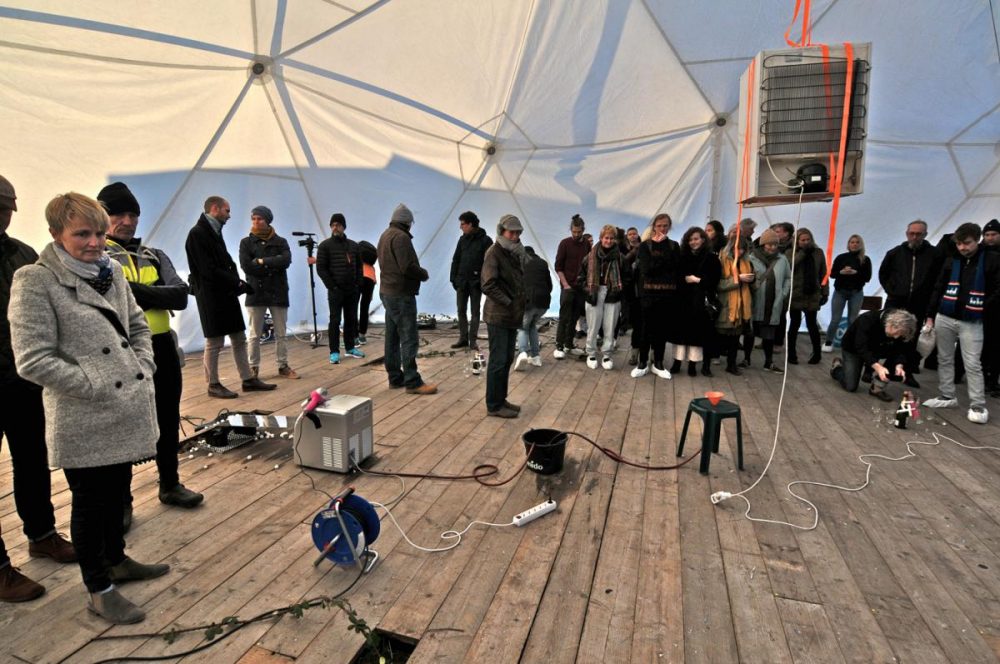
The locations have been chosen in a targeted way based on new research area and bodies with which no one has worked before; transition areas and developers, university campus and research areas, primary schools and education programmes, festivals and installation art and so on. We have worked with biologists, children have tried to cook on sunlight, a number of m2 clay field has been excavated and examined and sound installations have been built as peripheral programming at festivals.
We worked with biologists, children have tried to cook on sunlight
This always involved a coalition between MIR and the local organisation. Exceptional situations invite unusual choices and inventive solutions. Artists who were approached to come up with a project plan for the specific locations were put to the test. And develop new work for the specific location.
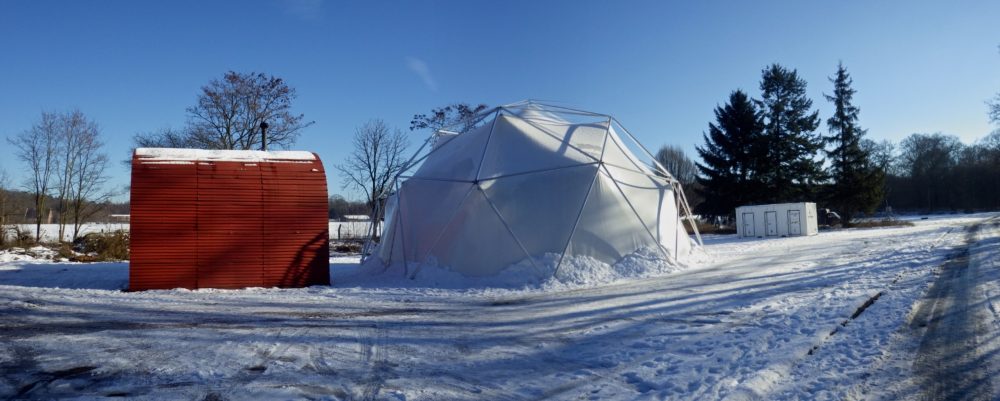
The most interesting consequence of this project is that artists are given the opportunity to produce new work in special places. This is first and foremost important for the artist himself. Art as an expedition also suggests a scientific context and to some extent this is true. Although science is looking for general facts, art is looking for personal views.
Art as expedition also suggests a scientific context
In both cases, you want the experiences to be insightful. At each new location you reach a different audience. In this way, you also reach other interested parties who are not solely related to art. This gives rise to special, boundary-crossing coalitions of disciplines.
MIR Team
The organisation of such projects is and became more and more demanding. What started as an adventurous initiative became, as the MIR foundation, a small organization with correspondence, office work and financial obligations. The current guidelines for artists' initiatives and the otherwise justified honoraria for participating artists (Fair Practice Code), which we have otherwise neatly handled in recent years, requires a professional organization with at least two permanent employees. This is no longer feasible for us in terms of time or resources.
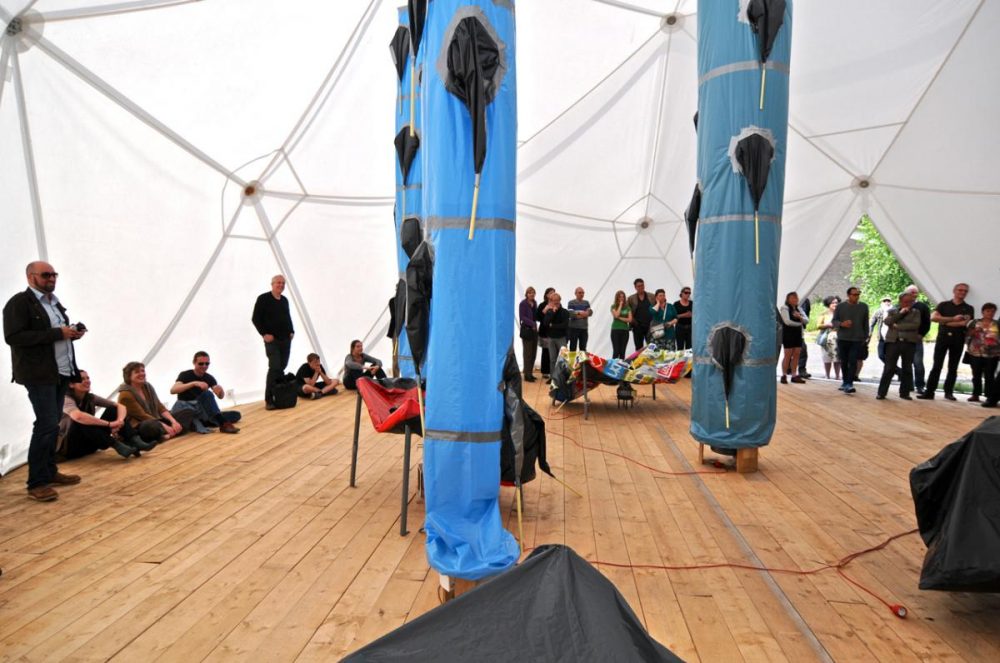
The new codes of conduct that are part of the Governance Code Culture set the bar high and there is certainly something to be said for that. But the codes mainly guarantee the honorarium of participating artists and not directly that of the organization around the projects. In practice, this means an almost impossible task for artists to focus on organizing art projects in addition to their professional art practice.
In practice, this means an almost impossible task for artists to focus on organizing art projects in addition to their professional art practice.
That will probably be more in the hands of people with an art management degree or something similar in the future. MIR was an organization made up entirely of artists, from desk work to the build-up work.
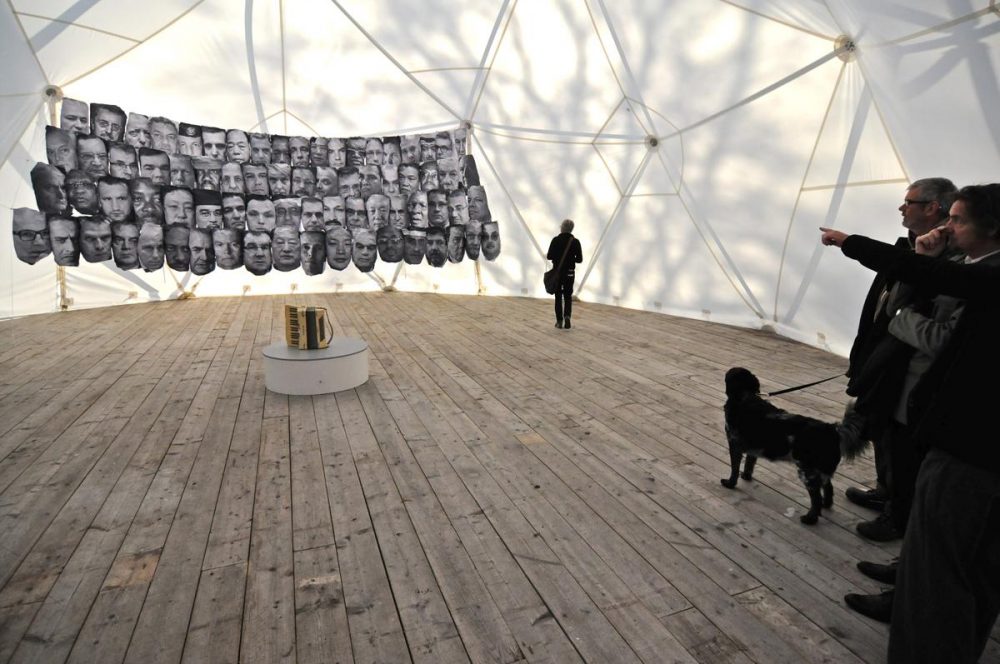
Another problem is the desire to respond to current developments concerning a specific location, to approach a suitable artist and to have him or her develop a new work for that unique MIR location. This is partly an ad hoc process, in which many uncertain factors play a role and much gradually takes shape, which is very much in keeping with the character of MIR. This way of working is not in keeping with the subsidy guidelines, which require the vision and choice of artists to be central beforehand.
This way of working does not fit in well with the subsidy guidelines, which require the vision and choice of artists to be central beforehand.
With that, the curtain falls on MIR and the organization including myself has decided to stop with the mobile MIR projects. Organisation, management and construction was in the hands of: Alphons ter Avest, Anouk Mastenbroek, Joyce Zwerver, Monika Heldoorn, Harriet Caldwell, Gerard Koek, Tanja Smeets, Ronald van der Meijs, Jeroen Glas, Fons Snelder, Bart Verburg and Karel van der Eijk. We would like to thank all those involved and institutions that have supported us over the years for their contributions to the MIR projects.
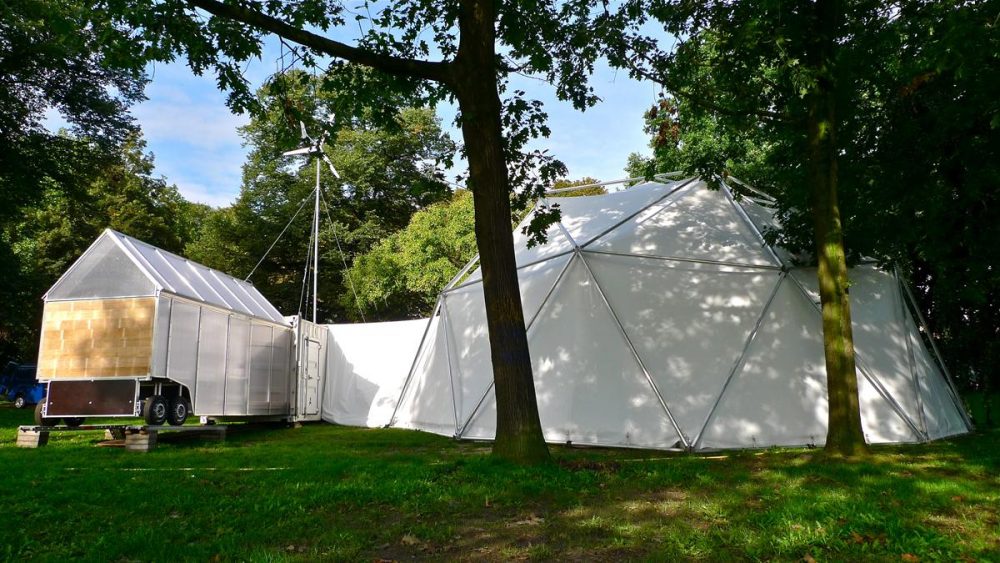
What remains is a 10 year visual report of MIR projects to be seen at mirproject.nl


